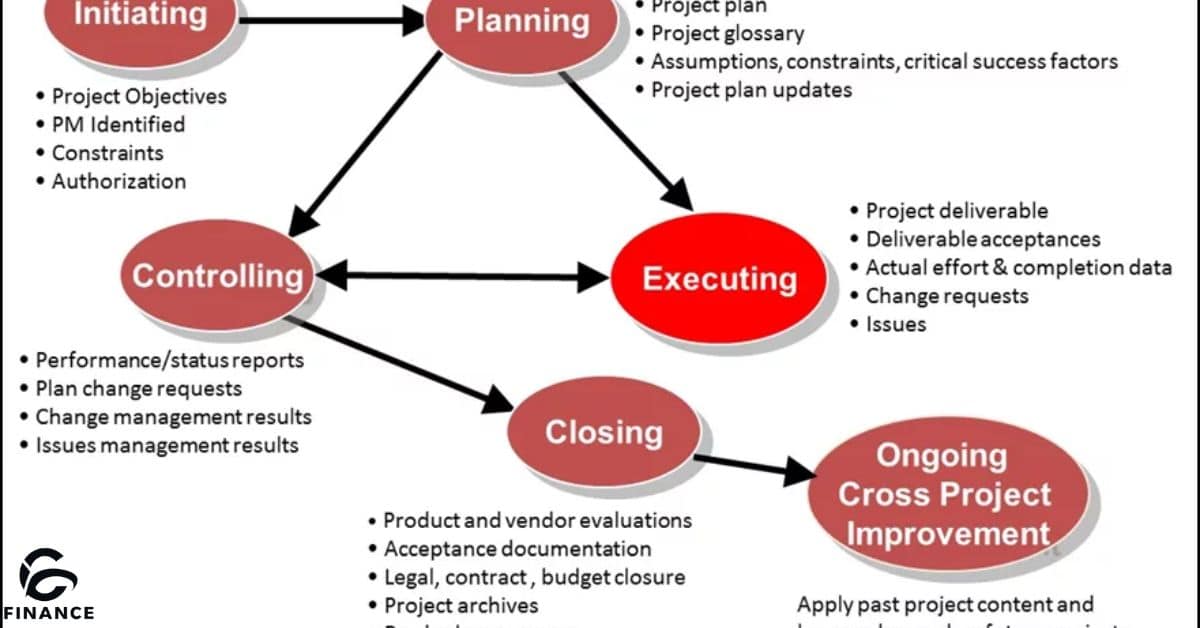In the ever-evolving business landscape, numbers reign supreme. Financial data isn’t just a collection of figures; it’s a narrative that unveils an organization’s triumphs, challenges, and untapped potential.
For managers aspiring to elevate their leadership, mastering the intricacies of accounting is akin to possessing a powerful compass, guiding them through the intricate terrains of operational decision-making. This comprehensive guide will empower you to decipher the language of profit, transforming raw data into strategic insights that propel your company towards unprecedented success.
Decoding the Financials: Unleashing Hidden Business Truths
Just as a doctor interprets X-rays to diagnose a patient’s condition, a manager must meticulously analyze financial statements to gauge their company’s health. These critical reports serve as diagnostic tools, offering an inside look at an organization’s performance, strengths, and vulnerabilities.
The Trilogy of Insight
- Income Statement: This statement unveils the profitability of your operations over a specific period, detailing revenues, expenses, and the bottom-line net income (or loss). Think of it as a snapshot of your company’s earnings prowess.
- Balance Sheet: Akin to a freeze-frame of your organization’s financial standing, the balance sheet captures your assets, liabilities, and equity at a particular moment in time. This report is critical for assessing your company’s overall net worth and liquidity.
- Cash Flow Statement: Cash is the lifeblood of any business, and this statement tracks the inflows and outflows of cash from operating, investing, and financing activities. It offers invaluable insights into your company’s ability to generate and manage cash effectively.
By thoroughly comprehending these three pillars of financial reporting, you’ll gain an in-depth understanding of your company’s performance, enabling you to make well-informed decisions that drive growth and mitigate risks.
Spotting Red Flags and Growth Opportunities
As you delve into these financial statements, keep a watchful eye for potential red flags, such as:
- Declining revenues or profit margins
- Excessive debt or liquidity issues
- Negative cash flows from operations
- Unusual or concerning transactions
Conversely, positive indicators like consistent revenue growth, increasing profitability, strong cash reserves, and efficient asset utilization can signal promising growth opportunities worth exploring.
Remember, financial statements are not just numbers on a page; they are powerful storytellers that reveal the intricate narratives of your organization’s journey. By mastering their interpretation, you’ll unlock a treasure trove of insights, empowering you to steer your company towards sustainable success.
Speak Fluent “Accountant”: Vital Metrics Every Manager Must Know

While financial statements provide a comprehensive overview of your company’s performance, specific accounting metrics offer a granular view into various aspects of your operations. These metrics serve as vital diagnostic tools, enabling you to pinpoint areas of strength, identify potential weaknesses, and benchmark your organization against industry standards.
Profitability Primers
Profitability is the ultimate litmus test for any business venture. Here are some key metrics that will help you gauge your company’s earning potential:
- Gross Profit Margin: This metric measures the percentage of revenue remaining after deducting the direct costs associated with producing your goods or services. A healthy gross profit margin signals efficient operations and pricing power.
Copy code - Operating Profit Margin: By factoring in operating expenses like salaries, rent, and utilities, this ratio evaluates your company’s ability to generate profits from its core business activities.
Copy code - Net Profit Margin: As the bottom line, this metric reveals how much of every dollar in revenue is translated into net income after accounting for all expenses, including taxes and interest.
Copy code
Consistently monitoring and optimizing these profitability ratios can help you identify areas for cost-cutting, pricing adjustments, or operational efficiencies, ultimately boosting your bottom line.
Liquidity and Solvency Signposts
Liquidity and solvency are critical components of financial stability. These metrics shed light on your company’s ability to meet its short-term and long-term obligations:
- Current Ratio: This liquidity ratio assesses your organization’s capability to cover its current liabilities (debts due within one year) with its current assets (cash, accounts receivable, inventory).
Copy code - Quick Ratio: Similar to the current ratio, but with a more conservative approach, the quick ratio excludes inventory from current assets, as it may not be easily converted to cash.
Copy code - Debt-to-Equity Ratio: This solvency ratio evaluates your company’s financial leverage by comparing its total debt to its total equity (assets minus liabilities).
Copy code
Maintaining healthy liquidity and solvency ratios is crucial for ensuring your company can meet its financial obligations, access credit when needed, and navigate economic downturns with resilience.
Efficiency and Productivity Gauges
Maximizing the utilization of your resources is essential for driving profitability and competitiveness. These metrics help you evaluate the efficiency of your operations:
- Inventory Turnover Ratio: This ratio measures how efficiently your company manages its inventory, indicating the number of times inventory is sold and replaced over a given period.
Copy code - Receivables Turnover Ratio: By tracking the number of times accounts receivable are collected during a period, this ratio assesses the effectiveness of your credit and collection processes.
Copy code - Asset Turnover Ratio: This metric evaluates how efficiently your company generates revenue from its total assets, providing insights into asset utilization and productivity.
Copy code
Optimizing these efficiency ratios can unlock opportunities for streamlining operations, reducing waste, and maximizing the productivity of your resources, ultimately driving profitability and competitive advantage.
Mastering these vital accounting metrics will empower you to speak the language of business fluently, enabling you to make informed decisions that steer your company towards sustainable growth and success.
Read As:WHICH IS NOT AN EXPENSE ACCOUNT?
Control Your Costs: Strategies for Proactive Profitability Management

In the quest for profitability, cost management is a critical battleground. Effective cost control not only preserves your profit margins but also enhances your operational efficiency and competitiveness. Embracing a proactive approach to cost management is crucial for managers seeking to outpace their rivals and secure long-term success.
Understanding the Cost Equation
Revenues and costs are the two sides of the profitability coin. While revenue generation is often the primary focus, failing to maintain a tight grip on costs can quickly erode your hard-earned profits. To effectively manage costs, it’s essential to understand the fundamental cost classification system:
- Variable Costs: These costs fluctuate directly with changes in production or sales volume, such as raw materials, direct labor, and commissions.
- Fixed Costs: Expenses that remain relatively constant regardless of output levels, like rent, insurance, and administrative salaries.
- Direct Costs: Expenditures that can be directly traced to the production of a specific product or service, such as materials and labor.
- Indirect Costs: Overheads that cannot be easily attributed to a particular product or service, like utilities and administrative expenses.
By meticulously categorizing and analyzing your costs, you can identify areas for optimization, enabling you to make informed decisions that maximize profitability while minimizing unnecessary expenditures.
Cost-Cutting Strategies from Industry Leaders
Effective cost management is a cornerstone of successful organizations. Take inspiration from these real-world examples of cost-cutting prowess:
- Amazon: The e-commerce giant is renowned for its relentless pursuit of operational efficiency, leveraging automation, vertical integration, and lean management practices to reduce costs and drive profitability.
- Southwest Airlines: By adopting a no-frills approach, standardizing its fleet, and fostering a culture of cost-consciousness, Southwest Airlines has consistently maintained one of the lowest cost structures in the airline industry.
- Walmart: The retail behemoth’s prowess in supply chain management, inventory optimization, and leveraging its massive scale has allowed it to extract significant cost savings and pass those savings on to customers through competitive pricing.
Actionable Tips for Cost Optimization
While learning from industry leaders is invaluable, implementing cost-cutting strategies within your organization requires a hands-on approach. Here are some practical tips to help you gain control over your costs:
- Conduct Regular Cost Audits: Periodically review your expenses line by line, scrutinizing each outgoing dollar. Question the necessity of every expenditure and explore more cost-effective alternatives.
- Embrace Lean Principles: Identify and eliminate waste within your processes, whether it’s excessive inventory, unnecessary steps, or inefficient resource allocation. Streamlining operations can yield significant cost savings.
- Negotiate Better Terms: Don’t hesitate to renegotiate contracts with suppliers, vendors, and service providers. Even modest reductions in unit costs or fees can substantially impact your bottom line.
- Invest in Technology: Automation and digitization can dramatically reduce labor costs, improve efficiency, and minimize errors. Explore solutions like workflow management software, robotic process automation, and cloud computing.
- Foster a Cost-Conscious Culture: Encourage a mindset of cost-awareness throughout your organization. Empower employees to identify cost-saving opportunities and reward those who contribute innovative ideas for reducing expenses.
Remember, effective cost management is an ongoing process, not a one-time event. Regularly revisit your cost structures, adapt to changing market conditions, and continuously seek opportunities for optimization.
Forecasting for Fair Weather: How to Soar With Financial Projections
In the dynamic world of business, foresight is a invaluable asset. Financial projections empower managers to peer into the future, anticipate challenges, and seize opportunities before they arise. By mastering the art of forecasting, you’ll gain a strategic advantage, enabling you to navigate turbulent waters and steer your organization towards calmer, more profitable seas.
The Forecasting Trifecta
Effective financial projections rely on three critical components:
- Budgeting: A well-crafted budget serves as the foundation for your forecasts, outlining your anticipated revenues, expenses, and cash flows for the upcoming period. Budgets not only provide a roadmap for resource allocation but also establish benchmarks against which to measure actual performance.
- Projections: Building upon your budget, projections extend your financial outlook further into the future, typically spanning multiple years. These forward-looking estimates incorporate assumptions about market conditions, growth rates, and operational factors, enabling you to anticipate future financial needs and identify potential challenges or opportunities.
- Scenario Planning: No forecast is entirely foolproof, as unforeseen events can quickly derail even the most meticulously crafted projections. Scenario planning allows you to stress-test your projections by considering various “what-if” scenarios, such as economic downturns, supply chain disruptions, or shifts in consumer demand. This proactive approach equips you with contingency plans, mitigating risks and enhancing your organization’s resilience.
By synergizing these three elements, you’ll create a robust forecasting framework that empowers you to make informed, data-driven decisions that position your company for long-term success.
Crafting Accurate and Actionable Forecasts
While forecasting is an art, adhering to best practices can significantly enhance the accuracy and effectiveness of your projections:
- Leverage Historical Data: Analyze past performance data to identify trends, seasonality patterns, and correlations that can inform your assumptions and projections.
- Incorporate Market Intelligence: Stay attuned to industry developments, competitor movements, and macroeconomic factors that could influence your future performance.
- Engage Cross-Functional Expertise: Collaborate with stakeholders from various departments, such as sales, marketing, operations, and finance, to gather diverse perspectives and validate your assumptions.
- Continuously Monitor and Adjust: Treat your forecasts as living documents, regularly reviewing and updating them as new information becomes available or circumstances change.
- Communicate Effectively: Ensure that your projections are clearly articulated and understood by all relevant stakeholders, fostering alignment and enabling prompt action when necessary.
By embracing a disciplined and data-driven approach to forecasting, you’ll gain the foresight necessary to navigate turbulent market conditions, capitalize on emerging opportunities, and steer your organization towards sustained growth and profitability.
Transform Data into Decisions: Visualizing Accounting for Agile Leadership
In today’s fast-paced business environment, static reports and spreadsheets are no longer sufficient for effective decision-making. To truly harness the power of accounting data, managers must embrace the art of data visualization, transforming complex financial information into compelling and actionable insights.
Why Visualization Matters
Data visualization is more than just creating aesthetically pleasing charts and graphs. It’s a powerful tool that can:
- Uncover Hidden Patterns and Trends: By presenting data in a visual format, relationships, outliers, and trends that may have gone unnoticed in raw numbers become readily apparent.
- Facilitate Faster Comprehension: Our brains are wired to process visual information more efficiently than dense numerical data, allowing for quicker understanding and decision-making.
- Foster Data-Driven Collaboration: Interactive visualizations create a common language for stakeholders across departments, enabling more effective communication and alignment around data-driven insights.
- Drive Operational Agility: By providing real-time visibility into key performance indicators (KPIs) and metrics, data visualization empowers managers to rapidly identify issues, adapt strategies, and seize emerging opportunities.
Embracing data visualization is not just a matter of aesthetics; it’s a strategic imperative for organizations seeking to gain a competitive edge through data-driven decision-making.
Bringing Accounting Data to Life
Numerous tools and techniques are available to help managers visualize their accounting data effectively. Here are some powerful options to consider:
- Dashboards: Interactive dashboards consolidate multiple data sources and KPIs into a single, visually compelling interface, providing real-time insights into financial performance, operational metrics, and more.
- Business Intelligence (BI) Software: Robust BI platforms offer advanced data visualization capabilities, enabling you to create customized reports, interactive dashboards, and in-depth analyses tailored to your specific needs.
- Data Visualization Libraries: For those with programming skills, open-source libraries like D3.js, Plotly, and Chart.js offer extensive customization options for creating highly interactive and visually stunning data visualizations.
- Spreadsheet Visualization: Even within traditional spreadsheet applications like Microsoft Excel or Google Sheets, built-in tools like pivot tables, charts, and conditional formatting can be leveraged to bring your financial data to life.
When selecting the right visualization tools for your organization, consider factors such as ease of use, integration with existing systems, collaboration capabilities, and scalability to ensure a seamless and sustainable implementation.
Examples of Effective Visualization in Action
Numerous organizations have harnessed the power of data visualization to drive better decision-making and achieve remarkable results. Here are a few inspiring examples:
- Walmart: The retail giant’s data visualization platform, known as the Retail Link System, provides suppliers and store managers with real-time insights into sales, inventory, and supply chain data, enabling proactive decision-making and optimized operations.
- Netflix: The streaming giant’s data visualization tools allow content creators and decision-makers to analyze viewership patterns, subscriber behavior, and content performance, informing strategic decisions around content acquisition and personalized recommendations.
- Airbnb: By visualizing data on pricing, occupancy rates, and guest preferences, Airbnb empowers hosts to optimize their listings and pricing strategies, enhancing the overall guest experience and profitability.
These examples demonstrate the transformative potential of data visualization in driving strategic decision-making, operational excellence, and business success across diverse industries.
As a manager, embracing the power of data visualization will equip you with the insights and agility necessary to navigate the complexities of today’s business landscape. By transforming raw accounting data into compelling visuals, you’ll gain a competitive edge, foster data-driven collaboration, and unlock new opportunities for growth and profitability.
Final Thoughts
In the ever-evolving symphony of business, financial data serves as the sheet music that guides managers towards harmonious growth and sustained success. By mastering the art of interpreting financial statements, leveraging vital accounting metrics, implementing proactive cost management strategies, crafting accurate forecasts, and harnessing the power of data visualization, you’ll elevate your leadership prowess to new heights.
Embrace the principles outlined in this comprehensive guide, and you’ll unlock the ability to:
- Decode Financial Narratives: Gain profound insights into your organization’s performance, strengths, and vulnerabilities by thoroughly comprehending financial reports.
- Speak the Language of Profit: Command a deep understanding of essential accounting metrics, enabling you to pinpoint areas for improvement and benchmark your company against industry standards.
- Control Costs with Precision: Implement cost-cutting strategies that preserve profit margins, enhance operational efficiency, and position your organization for long-term competitiveness.
- Anticipate Market Shifts: Leverage data-driven forecasting and scenario planning to navigate economic fluctuations, mitigate risks, and seize emerging opportunities proactively.
- Drive Agile Decision-Making: Transform complex financial data into compelling visualizations, fostering data-driven collaboration and enabling rapid, informed decision-making.
Remember, the true power of accounting intelligence lies not just in the numbers themselves but in your ability to interpret, analyze, and act upon the insights they reveal.
Embrace this mindset, and you’ll ascend to the ranks of visionary leaders who wield financial mastery as a strategic weapon, propelling their organizations towards unprecedented heights of success.

Howdy, editor at FinanceEon.com, brings over a decade of financial journalism experience. He ensures accuracy and insightful analysis, guiding a team on market trends and investment strategies.







